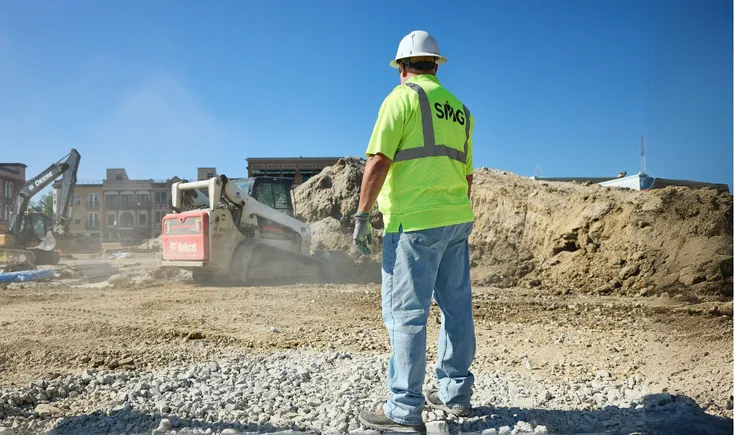Over my three decades in this field, I’ve learned that safety isn’t just about compliance. It’s about understanding the real challenges that workers, owners, and contractors face on the ground every day.
A short while back, one of our senior safety advisors noticed one worker seemed off and, after talking to him, learned he was struggling mentally but hesitant to seek help due to stigma. Drawing from her own experience, she encouraged him to seek therapy and offered a referral. They continued to talk about his progress in the following weeks.
This is empathy in action—seeing the whole person, not just their tasks. As safety professionals, we may not always know if we’ve prevented an incident, but leading with empathy ensures we’re supporting our workers in every way, including their mental well-being.
By fostering a culture where safety is a shared responsibility, we can transform how we operate and achieve lasting success. Because safety is about people, and people need to feel supported.
Empathy as the Key Driver
Empathy means understanding the real challenges our teams face daily—tight deadlines, tough conditions, and unpredictable weather. It’s about truly listening to concerns, valuing perspectives, and recognizing reality. When empathy is the foundation of our safety practices, we go beyond regulations to genuinely support our team members.
Empathy looks like what our senior safety advisor provided to a struggling worker: listening, encouraging, checking in, and following up. As our workers face challenges, safety isn’t just a checklist of do’s and don’ts, it’s using our emotional intelligence to understand the person and what is motivating them (both good and bad) in key moments on a job.
Building a Culture of Compassion
Empathy shouldn’t be viewed as a soft skill but as a strategic driver for effective safety practices. It helps us better understand the pressures our crews face and how to address their needs. In a culture driven by compassion, everyone on the team feels supported—knowing that their well-being is a top priority. This mindset shifts safety from a compliance-based approach to one that is about ensuring people feel heard, respected, and valued.
The construction industry has often been viewed as tough and unforgiving, but leading with empathy allows us to break down that image. When we listen to what our workers are going through and give them the tools and resources they need, we create stronger teams. It’s not just about checking off safety boxes—it’s about creating an environment where everyone takes ownership of safety, from top to bottom.
Getting to the Heart of Safety
True change in safety requires more than just numbers or reports—it demands a deeper understanding of everything happening on the job site. Over our 30 years of experience, we’ve found that companies often struggle to make lasting progress because they focus too narrowly on incident reports and compliance checklists. To truly move the needle on safety, it’s essential to take a closer look at the broader culture and environment in which your team operates.
Here are some key areas we’ve found to be crucial when assessing and improving safety culture:
- Broader Scope: Safety goes beyond compliance. A holistic approach looks at culture, leadership, and employee attitudes. When leadership is engaged, it fosters accountability at all levels.
- Communication & People: Open, honest communication helps workers feel safe raising concerns. Real conversations uncover challenges that data can’t, fostering a proactive culture that prevents incidents.
- Mix of Data: Combining qualitative insights with quantitative data paints a fuller picture. This blend helps identify hidden trends that pure data often misses.
- Root Cause Analysis: Incidents are often symptoms of deeper issues. By identifying root causes, like poor communication or unrealistic expectations, we can address the real problems, not just the surface issues.
- Proactive Solutions: Focus on building long-term resilience into safety practices and start early. Solutions like better scheduling, enhanced training, or mental health support prevent issues before they arise.
- Continuous Improvement: Safety requires ongoing reassessment. Regular check-ins ensure safety strategies evolve with the team’s needs and the job site’s dynamics.
Conclusion
Let’s move beyond just meeting compliance and work toward building a safer, more supportive future based on compassion and collaboration. When we put our team members first and foster genuine connections at all levels, we don’t just protect our crews—we strengthen the entire industry. The journey toward a more empathetic and holistic safety culture starts with each of us, and together, we can make a lasting difference.

